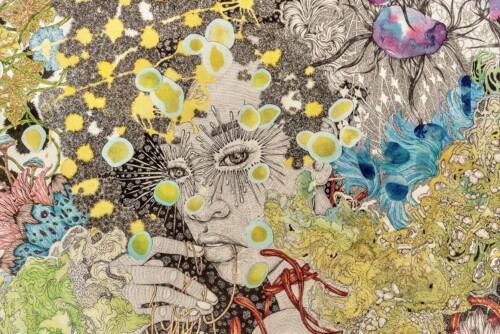Though they are from different time periods and countries, these films share characters that hope for transformation and escape from drudgery, using the transportations of the imagination, beauty, and music—particularly music performed at night. Baker represents both longings unfulfilled and the exquisite stretch of reaching toward one’s desires. She represents the pleasures of illusions, and probably also of delusions, because of the way they mask reality. Her embodiments in the films I have discussed are the ways characters make their pain and frustration not just bearable but beautiful. Through references to multiple forms and aspects of Baker’s aesthetics, characters seek release from the everyday in the darkened, enclosed personal theaters of the mind, bedroom, cabaret, subway, or cinema. For in such spaces of containment, the body is liberated and is less pressured by the policing gaze of family members, the larger society, or even the self. Yet as Touki Bouki and the short French film show, the mind can imprison one in delusion as well as lift the spirit with fanciful flights.
The Baker samples further demonstrate the entertainer’s capacity for multiplicity within iconicity. Baker’s subjectivity is composite: her audience is linked to her and to what she makes possible through her performance and embodiments in this interchange. Baker’s syncretic dance practice or her performance, which emphasizes change, disjuncture, and the use of multiple embodiments, is true to Baker’s composite subjectivity. Baker’s films thematize her recognizability—her status as an icon—and in so doing make her available for a wide range of interpretations by varying audiences while remaining essential and legible. Through sampling, Baker’s iconicity becomes complete, for without being actually present and visible, she can figure in a film narrative as a psychological, visual, and aural force, magnetizing the longings, delusions, and wishes of both characters and audiences.
Baker’s quotability makes room to consider, as it demonstrates, her capacities as an author of her performance, rather than only the object of colonialist male fantasy. For the history of a colonizing male sexist gaze that has tended to denigrate Baker need not be her only narrative. We can find the ways Baker owned her work and seek access to her genius. Beyoncé, dismissible as pop/hip-hop silliness in many scholarly quarters, seeks, it seems, greater significance and ownership of her own work by claiming Baker and enacting a researched performance. The association sheds new light on both performers. The possibility of locating black women’s creativity within the commodity-driven mass culture scene is perhaps Baker’s greatest legacy. This space for black women to make the erotic a space of power and pleasure, not merely humiliation and control, is the paradise Josephine Baker cleared out of fallow, hostile cultural fields in which they were not meant to survive, much less be independent and important.




